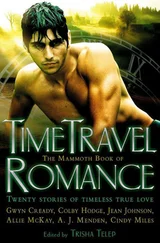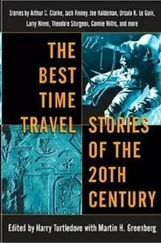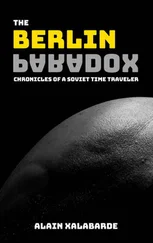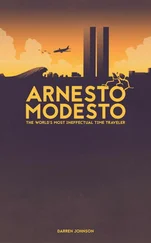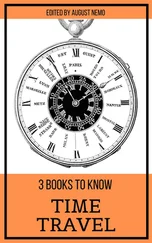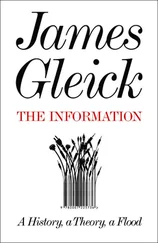James Gleick - Time Travel
Здесь есть возможность читать онлайн «James Gleick - Time Travel» — ознакомительный отрывок электронной книги совершенно бесплатно, а после прочтения отрывка купить полную версию. В некоторых случаях можно слушать аудио, скачать через торрент в формате fb2 и присутствует краткое содержание. Год выпуска: 2016, Издательство: Knopf Doubleday Publishing Group, Жанр: Старинная литература, на английском языке. Описание произведения, (предисловие) а так же отзывы посетителей доступны на портале библиотеки ЛибКат.
- Название:Time Travel
- Автор:
- Издательство:Knopf Doubleday Publishing Group
- Жанр:
- Год:2016
- ISBN:нет данных
- Рейтинг книги:5 / 5. Голосов: 1
-
Избранное:Добавить в избранное
- Отзывы:
-
Ваша оценка:
- 100
- 1
- 2
- 3
- 4
- 5
Time Travel: краткое содержание, описание и аннотация
Предлагаем к чтению аннотацию, описание, краткое содержание или предисловие (зависит от того, что написал сам автор книги «Time Travel»). Если вы не нашли необходимую информацию о книге — напишите в комментариях, мы постараемся отыскать её.
Time Travel — читать онлайн ознакомительный отрывок
Ниже представлен текст книги, разбитый по страницам. Система сохранения места последней прочитанной страницы, позволяет с удобством читать онлайн бесплатно книгу «Time Travel», без необходимости каждый раз заново искать на чём Вы остановились. Поставьте закладку, и сможете в любой момент перейти на страницу, на которой закончили чтение.
Интервал:
Закладка:
Wells never did justify treating the earth as a fixed point of the cosmos. Nor for that matter did he worry about where the Time Machine gets the energy to power its voyages. Here, too, he established a tradition. Even a bicycle needs someone to pedal, but time machines have unlimited free fuel, by the universe’s grace.
—
WE’VE HAD A CENTURY to think about it, and we still need to remind ourselves every so often that time travel is not real. It’s an impossibility, just as William Gibson suspected—a magic on the order of kissing one’s own elbow. But when I say that to a certain well-known theoretical physicist, he gives me a pitying look. Time travel is no problem, he says. At least if you want to travel to the future.
Oh, well, sure—you mean we’re all traveling forward in time anyway?
No, says the physicist, not just that. Time travel is easy! Einstein showed us how to do it. All we have to do is approach a black hole and accelerate to near the speed of light. Then, welcome to the future.
His point is that acceleration and gravitation both slow the clocks, relativistically, so you could age a year or two on a spaceship and return home a century hence to marry your great-grandniece (as Tom Bartlett does in Robert Heinlein’s 1956 novel Time for the Stars ). This is proven. GPS satellites have to compensate for relativistic effects in their very exact calculations. It’s hardly time travel, though. It is time dilation (per Einstein, Zeitdilatation ). It’s an antiaging device. *2And it’s a one-way street. There’s no going back to the past. Unless you can find a wormhole.
“Wormhole” is John Archibald Wheeler’s word for a shortcut through the warped fabric of spacetime—a “handle” of multiply connected space. Every few years someone makes headlines by hailing the possibility of time travel through a wormhole—a traversable wormhole, or maybe even a “macroscopic ultrastatic spherically-symmetric long-throated traversable wormhole.” I believe that these physicists have been unwittingly conditioned by a century of science fiction. They’ve read the same stories, grown up in the same culture as the rest of us. Time travel is in their bones.
We have arrived at a moment of cultural history when the doubters and naysayers are the real practitioners of time travel, the science-fiction writers themselves. “Totally impossible on theoretical grounds,” declared Isaac Asimov in 1986. He didn’t even bother to hedge his bets.
It can’t and won’t be done. (If you’re one of those romantics who thinks nothing is impossible, I won’t argue the case, but I trust you won’t decide to hold your breath until such a machine is built.)
Kingsley Amis, assessing the literary culture of science fiction in 1960, felt he was stating the obvious when he said, “Time travel, for instance, is inconceivable.” Thus practitioners of the genre resort to some version of Wells’s hand-waving explanation—“an apparatus of pseudo-logic”—or, as time goes on, simply trust their readers to suspend disbelief. And so it’s the science-fiction writers who remain willing to treat the future as open, while all around them physicists and philosophers surrender to determinism. “One is grateful that we have a form of writing which is interested in the future,” said Amis, “which is ready to treat as variables what are usually taken to be constants.”
As for Wells himself, he continued to disappoint his believers. *3“The reader got a fine confused sense of immense and different things,” he said in 1938. “The effect of reality is easily produced. One jerks in one or two little unexpected gadgets or so, and the trick is done. It is a trick.” (He was just back in London after a seven-city American lecture tour titled “Organization of the World Brain,” and he felt a need to deny special futuristic powers. “It is not a bit of good pretending I am a prophet. I have no crystal into which I gaze, and no clairvoyance.”)
—
LET’S LOOK one more time at how the trick was done:
…the dance of the shadows, how we all followed him, puzzled but incredulous, and how there in the laboratory we beheld a larger edition of the little mechanism which we had seen vanish from before our eyes. Parts were of nickel, parts of ivory, parts had certainly been filed or sawn out of rock crystal. The thing was generally complete, but the twisted crystalline bars lay unfinished upon the bench beside some sheets of drawings, and I took one up for a better look at it. Quartz it seemed to be.
“Look here,” said the Medical Man, “are you perfectly serious? Or is this a trick…?”
For Wells’s first readers, technology had a special persuasive power. This vague machine put a claim on the readers’ belief in a way that magic never could. Magic might include clouts on the head, as in Connecticut Yankee, as well as the talismanic act of turning back the hands on a clock. The cartoon “Felix the Cat Trifles with Time” employs both devices: Old Father Time unwinds his clock past “Year of 1” and “Stone Age” and whacks poor Felix with a club.
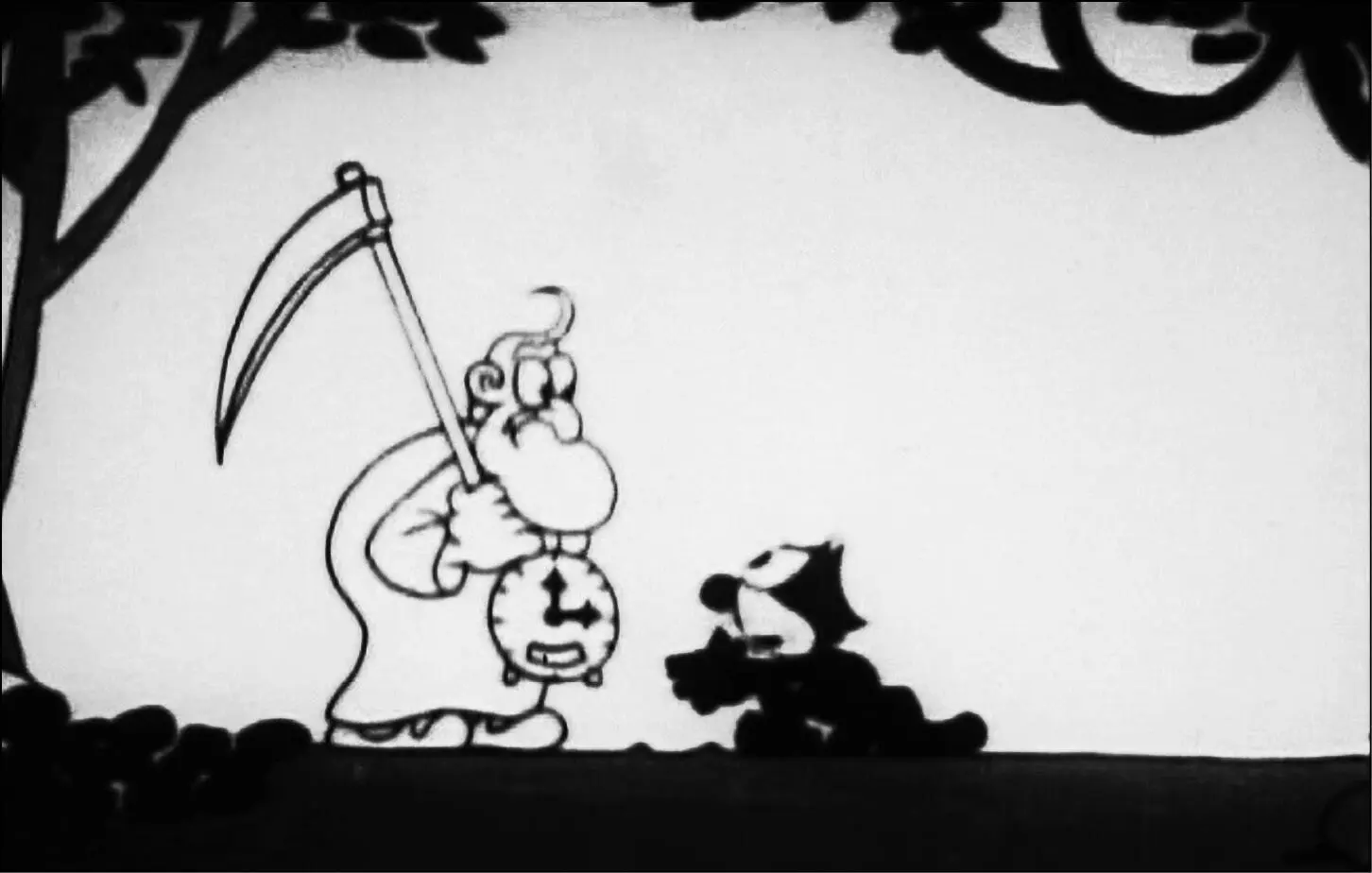
Credit 3.1
Before that, in 1881, a newspaperman, Edward Page Mitchell, published “The Clock That Went Backward” anonymously in the New York Sun. Old Aunt Gertrude, spectral in her white nightgown and white nightcap, has a mysterious bond with her eight-foot-tall Dutch clock. It seems defunct—until one night, when she winds it up in the flickering light of a candle, the hands begin to turn backward, and she falls dead. This becomes the occasion for a philosophical disquisition by one Professor Van Stopp:
Well, and why should not a clock go backward? Why should not Time itself turn and retrace its course?…Viewed from the Absolute, the sequence by which future follows present and present follows past is purely arbitrary. Yesterday, today, tomorrow; there is no reason in the nature of things why the order should not be tomorrow, today, yesterday.
If the future is different from the past, what if we reverse the mirror or rewind the clock? Can destiny carry us toward our beginnings? Can effect influence cause?
The device of the backward-running clock reappeared in a 1919 story, “The Runaway Skyscraper,” by the pseudonymous Murray Leinster. “The whole thing started when the clock on the Metropolitan Tower began to run backward” is its opening sentence. The tower trembles, the office workers hear ominous creaking and groaning, the sky darkens, night falls, the telephones produce only static, and all too soon the sun rises again, at high speed, and in the west.
“Great bombs and little cannon-balls,” shouts Arthur, a young engineer who has been worrying about his debts. “It looks awfully queer,” agrees Estelle, his twenty-one-year-old secretary, who has been worrying that she will become “an old maid.” The landscape transforms at a rapid pace, wristwatches are seen spinning backward, and finally Arthur puts two and two together. “I don’t know how to explain it,” he explains. “Have you ever read anything by Wells? The Time Machine, for instance?”
Estelle shakes her head no. “I don’t know how I’m going to say it so you’ll understand,” explains Arthur manfully, “but time is just as much a dimension as length and breadth.” The building has “settled back in the Fourth Dimension,” he decides. “We’re going back in time.”
These stories were multiplying. Another way to do the trick: bring in the devil. “A tall, flashy, rather Mephistophelean man whom I had seen from time to time in the domino-room” makes his appearance in Max Beerbohm’s “Enoch Soames,” published in the Century illustrated magazine in 1916. Enoch Soames is a “dim” man, stooping and shambling, an unsuccessful striver in 1890s literary London. He is, like some other writers, concerned about how posterity will remember him. “A hundred years hence!” he cries. “Think of it! If I could come back to life then—just for a few hours…”
Читать дальшеИнтервал:
Закладка:
Похожие книги на «Time Travel»
Представляем Вашему вниманию похожие книги на «Time Travel» списком для выбора. Мы отобрали схожую по названию и смыслу литературу в надежде предоставить читателям больше вариантов отыскать новые, интересные, ещё непрочитанные произведения.
Обсуждение, отзывы о книге «Time Travel» и просто собственные мнения читателей. Оставьте ваши комментарии, напишите, что Вы думаете о произведении, его смысле или главных героях. Укажите что конкретно понравилось, а что нет, и почему Вы так считаете.


